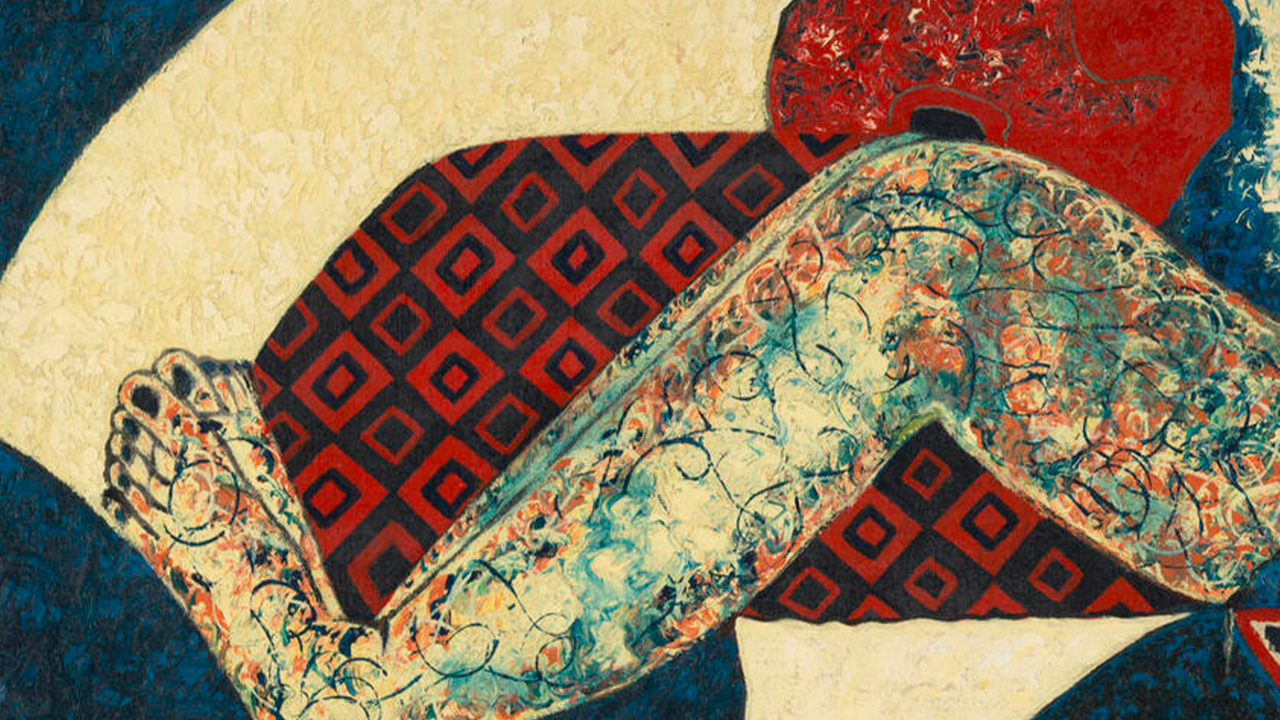Transmission Interrupted
Modern Art Oxford, UK
Modern Art Oxford, UK

It’s interesting to see how curators approach putting together group exhibitions with a political theme. Debates often revolve around whether you should even declare the show to be about politics at all – after all, being too explicit can sometimes eradicate the subtlety and discursiveness that a more ambiguous approach can offer. ‘Transmission Interrupted’, curated by Suzanne Cotter and Gilane Tawadros, went at the political head on, with a selection of works by 14 artists that attempted to look at ‘how contemporary artists disrupt prevailing forms of registering and representing the world’. The emphasis here was on the very specific and highly subjective ‘frames’ that artists can give to such subject matter.
Video featured large in ‘Transmission Interrupted’, including works by Jem Cohen, Pilar Albarracín and Yto Barrada, which contributed a slight feeling of biennial aspirationalism about the show. Many of the works included were related to the various ways in which conditions have changed within society post-9/11. Cohen’s NYC Weights and Measures (2006), for example, comprises 16mm footage shot around Brooklyn and Manhattan, with a commentary towards the end of the work detailing security measures recently designed to restrict filming and photography in public spaces. Duo Julia Meltzer and David Thorne presented their investigative video It’s not my memory of it: three recollected documents (2003), which incorporates a range of narratives that together meditate on governmental conspiracy theories. Incorporating three classified incidents connected to US foreign policy and international relations, including a 2002 missile strike in Yemen and a 1974 film by the CIA on the burial of six Soviet sailors, this work was a pertinent moment in the exhibition. In dealing explicitly with ideas of state cover-ups, the video had the effect of leaving the viewer questioning the actual work itself, and unclear about the legitimacy of the stories.
Michael Rakowitz’s The invisible enemy should not exist (recovered, missing, stolen series) (2007), a work that gained a significant amount of attention at the 10th Istanbul Biennial in 2007, uses the display mode of the historical museum, with ancient artefacts reconstructed from food packaging and newspapers, the originals of which are recorded as stolen or missing from the Iraqi National Museum since the 2003 invasion. The display in Oxford been arranged by a member of staff from London’s British Museum, and is accompanied by a soundtrack – a rendition of Deep Purple’s 1972 song ‘Smoke on the Water’ by the Iraqi covers band 99%, a member of which was Dr. Donny George, who, according to an accompanying leaflet written by the artist, was previously director of the Iraqi National Museum. It is an impressive work, playfully yet acutely embodying the complex layers of the circumstances and aftermath of war.
Given the exhibition’s focus on the artists’ relationship to the public sphere, a number of works were presented outside Modern Art Oxford’s building. The museum’s façade was covered by Ernesto Salmerón’s gauche mural in bright pink and yellow Guerra Colorida (Colourful War): Mural#2 (2009), colours associated with the current Sandinista government in Salmerón’s native Nicaragua, which recently replaced its traditional black and green colours in an attempt to instil a sense of optimism for a democratic future. Sislej Xhafa’s elegant sick bus (2009) was parked on a patch of green by Oxford Castle. The bus, which had been coated in metallic reflective film, had been pushed through the streets of Oxford by a group of unemployed people as a performance. The work seemed to act as a metaphor for the critical reflection of the exhibition as a whole, simultaneously mirroring its surroundings whilst camouflaging itself, as it lay ‘abandoned’.
The essays in the rather beautifully designed catalogue were distinctly optimistic about the potential art has in providing new perspectives on the social or the political, informed by Jacques Rancière’s theory of the ‘re-distribution of the sensible’ that calls for a more widespread and personal ownership of society’s infrastructure. But the most striking thing about ‘Transmission Interrupted’ was that it shied away from acknowledging that art itself, throughout it’s history, has also been one of the most ubiquitous means for representing the world. Framings of frames aside, a number of the selected exhibits were strong, significant works from the last few years – individual and judicious interpretations of recent history.
























